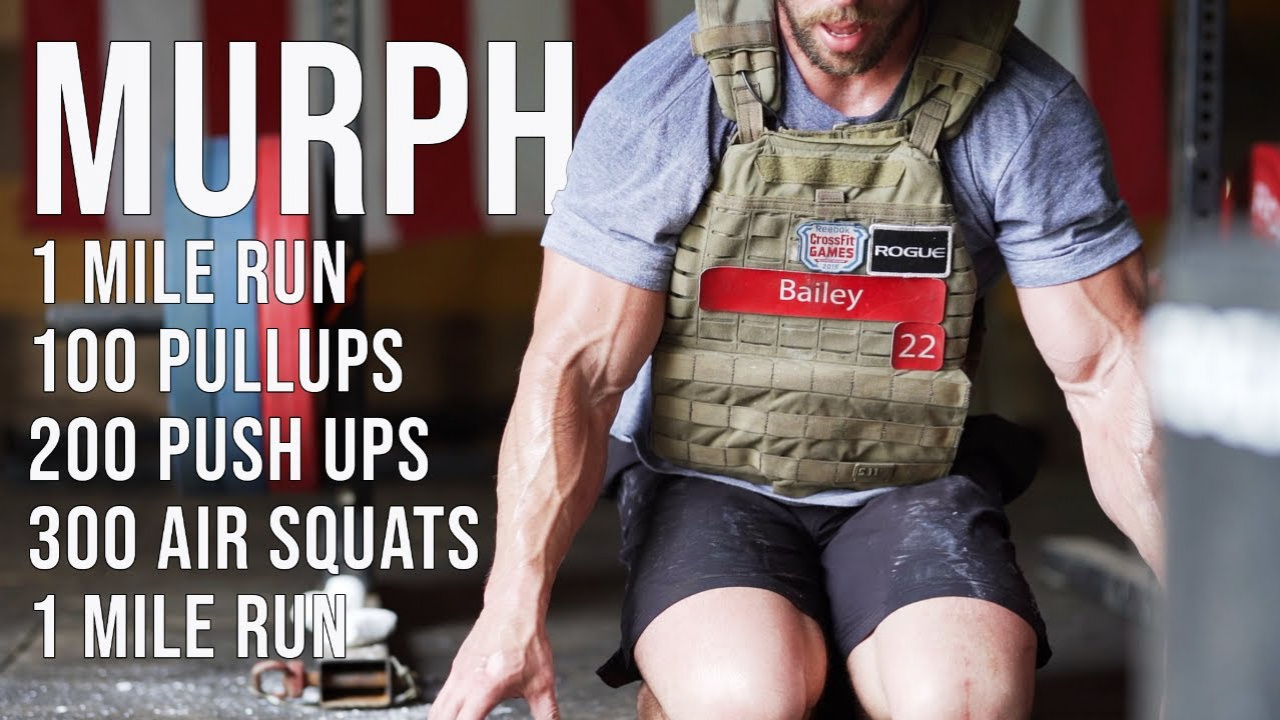If you want to tackle CrossFit's toughest workout, but don't think you can accomplish it as is, you can still follow this incredible WOD with a few simple strategies and modifications.
CrossFit is known for its super-intense workouts of the day (WODs), but what many beginners don't know is that there are workouts that go beyond the sport's usual intensity.
They are called the "Hero WODs" and they usually honor a fallen service member, making them more meaningful than the average workout. Among the most difficult and well-known? WOD CrossFit Murph .

THE Murph WOD is a hero training named after the Navy Lieutenant Michael Murphy .
This is one of the hardest workouts you can do; most hero workouts are.
They are not only physically challenging, but also mentally stimulating. Most CrossFit boxes around the world perform the Murph challenge Memorial Day .
Once a year is pretty standard, but some venues schedule the WOD Murph other holidays or even an ordinary day to test the limits of their members.
CrossFit Murph's Workout is probably more suited to WOD regulars rather than beginners who are still learning to get in shape and develop their strength and endurance.
And while the Murph Challenge is extremely difficult, it’s worth it to the end. It’s really rewarding to know that you gave it your all and pushed harder than you would in a normal workout.

What exactly is it?
The Murph WOD consists of a one-mile run, 100 pull-ups, 200 push-ups, 300 squats, and another one-mile run, all performed consecutively.
The hardest part of the Murph WOD is the volume and length of the workout, so a little strategy is required to be successful. Strength training movements can be broken down to make the Murph Challenge achievable for the average user.
If you decide to split the reps, be sure to write down the number of sets performed on a piece of paper so you don't lose count.
Another way to reduce the scale is to just cut the workout in two. This is a great choice for those who have never done the Murph workout before, or for those who are newer to the movements.
Of course, as with all WOD hero , your mindset is everything. You can expect your arms to start failing on push-ups, and your legs to turn to jelly from squats.
Your mind will want you to stop before your body does, so it's important to remind yourself of the deeper meaning of training, and this will keep you going.
How to follow the Murph WOD
Start the Murph WOD with a one-minute run km, then move on to these exercise modifications (if needed) to complete all repetitions. Finish with another 1-mile run.
Total duration: up to 1 hour
You will need: Resistance band, box
1. Banded Pull-Ups
HAS.
If you have never done pull-ups before, we recommend trying them for the first time under the supervision of a trainer to ensure your form is correct and to avoid injury.
While some women can do the 100 pull-ups in the Murph WOD with no problem (we're impressed too), you'll likely need to modify the exercise in order to complete that number of reps.
Instead of strict pull-ups, many athletes opt for the kipping version, which uses momentum to make it easier to complete more repetitions.
One option that will work for many people, however, is using a resistance band to complete the repetitions.
Using a resistance band adds some assistance to a regular pull-up and allows you to primarily use your upper body. The thicker the band, the more assistance.
Pass the band over the bar and pull one end through the other, creating a loop. Place one foot through the loop and assume a " dead hang " position, with your arms fully extended.
B.
Hover your chin over the bar, then slowly lower yourself back to the starting position. Be careful not to swing or use momentum to pull yourself over the bar.
Series:
1
Rehearsals:
100
2. Jumping Pull-Up

HAS.
If you don't have access to a resistance band or just want to try something a little different, here's another option.
Remember that this modification, as well as the others, is meant to be an option to supplement the 100 reps of the Murph workout , not to add to them. An extension jump is another option that allows the athlete to jump with their legs to get their chin over the bar. This still requires pulling, but a little less since you are using lower body power.
Set up a box under the pull-up bar in a spot where you can jump and land easily while holding onto the bar. Begin by standing on the box with your hands shoulder-width apart.
B.
Jump up until your chin is just above the bar, and squeeze your thighs and arms to hold yourself up there for a second. Then, slowly lower yourself down until your feet touch the box. Repeat until you complete the reps.
Series:
1
Rehearsals:
100
3. Box Push-Up
HAS.
Now it's time to move on to the next section of the Murph WOD : push-ups. If you're doing standard push-ups, be careful about how many push-ups you do at once.
You may feel good at first and want to do 10 or more reps at a time, but that will quickly deteriorate if you're not used to the volume. By breaking it up into much smaller sets with short rests, you'll go farther, much faster.
The same principle applies to modifications of this movement, such as the box push-up. The higher the box, the easier it is.
Start with your hands shoulder-width apart on the box, and assume a plank position with your heels off the floor. Squeeze your glutes and butt to maintain a strong position.
B.
Lower your chest toward the box, with your elbows close to your sides, but not touching. Return to the starting position, maintaining tension in your core and glutes.
Sets:
1
Ans:
200
4. Banded Push-Ups
HAS.
To get a feel closer to a regular push-up, try wrapping a resistance band attached to a pull-up bar around your hips. Much like resistance band pull-ups, this adds a little assistance to the push-up.
Remember that this modification, as well as the others, is an option to achieve the 200 reps, not an addition. Start in a full plank position with your hands shoulder-width apart. Engage your glutes and core throughout the movement.
B.
Bend your elbows and lower your chest toward the floor, making sure your lower body doesn't touch the floor. Keep your elbows close to your body as you return to the starting position.
This keeps the core engaged, and in most movements, the core is the meat and potatoes of the movement." This means you'll get the most benefit from the movements even if you're not doing the originally prescribed version of the Murph workout.
Sets:
1
Ans:
200
5. Air Squat

HAS.
Next up in the Murph workout? Squats. You can modify an overhead squat by adding a butt target to hit as you sit back into your squat. The higher the target, the easier the squat.
But if you're familiar with the squat movement, you probably won't need any modifications. Start with your feet slightly wider than hip-width apart.
B.
Lower yourself until your knees are just below parallel. You can choose what you want to do with your hands, but most people find it comfortable to extend them in front of their body and then bring them back to the side when standing.
No matter what version of the squat you do, remember to squeeze your glutes as you stand up. This will take some of the work off your quads.
Keep your back in a neutral position (not too arched) and remember: it's not a good idea to crash into the bottom of the squat, especially as the second mile of the race approaches.
The second run is a chance to constantly remind yourself why you are doing this workout. Take one step at a time and keep going. You will want to stop, but the feeling you get when you finish the last mile, knowing that you gave it your all, is a feeling like no other.
Sets:
1
Ans:
300


